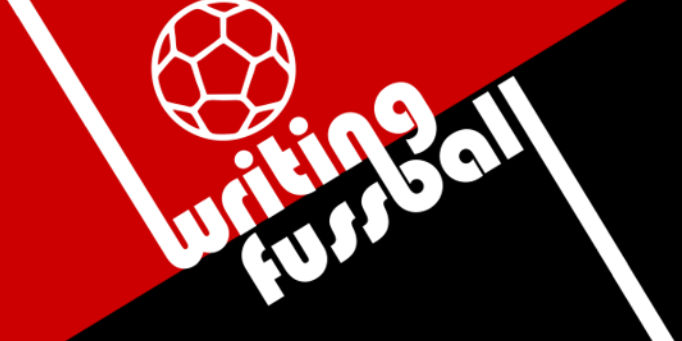The ever lasting debate about pyrotechnics


It's a cold Sunday evening. My girlfriend and I find ourselves at the local derby between Viking Stavanger and SK Brann on a rainy night. Around 9000 fans have found their way to Vikingstadion to watch the local lads fight for their lives in Norway's top flight. The quality of football is questionable at times and the atmosphere itself doesn't even come close to the atmosphere one can experience in Germany or elsewhere in Europe.
However, there's one thing that is bugging me to no end. As the teams enter the pitch some of the Viking fans light a pyro display. Blue and white smoke coming from their end of the stadium. It's majestic, it sets the atmosphere for the match and gives the players on the pitch a brilliant welcome.
There's no referee ordering the teams back to the dressing room, the announcer doesn't say a word and the public in the stadium doesn't care at all. As matter of fact, they seem to enjoy it. These days it is common place to see pyro displays in Norwegian stadiums. In Germany these sort of displays have led to massive fines for clubs and the perpetrators have in some cases been banned for life from watching football.
Norway is the polar opposite compared to the way the DFB and the DFL discuss pyro displays with the fans. In the Scandinavian country the debate was had back in 2009. Three clubs were given special licenses at first, but after everything went smoothly the rest of the clubs could allow their fans the same. All the fans have to do these days is to get permission from the fire department, the police, the club and the football association. Every single pyro effect must be included on the list they sent to these authorities, and off they go. Easy, right?
German hysteria
The public debate in Germany has often times focussed on the horrible consequences bengal flare and pyrotechnical displays can lead to. It's a health hazard, it can cause serious burns and at worst kill children the shrillest critics have cried out during these debates. However, their hysteria isn't based on any facts or statistics. For many ultras pyrotechnics are part of their fan experience. For better or worse, these displays are going to stay. The DFB can fine the clubs in the Bundesliga as many times as they want, the clubs can ban as many fans as they'd like – pyrotechnics are here to stay.
What the Norwegian model proves is that placing a lot responsibility in the fans hands might actually work. First and foremost, the fans have to be organised and decide what kind of display they want to put on and they have to account for every flare and effect they want to use. Ever since 2009 the fans have actually been able to do just that brilliantly.
However, there are serious problems that need to be addressed before the fans in Germany can be allowed to do the same as their Norwegian counterparts. First and foremost there is the legal matter of the clubs being responsible for what is going on at their matches. In Norway the clubs have happily agreed to take that responsibility upon them. Additionally there is also the question of how safe zones for pyrotechnical displays would look. It might very well be that German clubs would have to reduce the number of spectators at their matches in order to allow safe pyrotechnical displays at their matches.
Possible solutions
These issues clearly need to be addressed before there is any possible solution on the horizon. Furthermore, the fans need to show that they can handle these responsibilities if the DFB decides to offer them a possible way of lighting bengal flares and pyrotechnical effects legally at matches. Back in 2010 the ultras of Chemnitzer FC approached the DFB and the authorities asking them to start a pilot project that would have tested the feasibility of having fans using pyrotechnics within safe boundaries.
Back in 2011 the DFB's safety commissioner Helmut Spahn sat down with the fans to discuss such a pilot project. The project was as a matter of fact backed by the club, the police and the nationwide fan project in favour of legalising pyrotechnical displays. In the end the talks broke down after Spahn left the DFB. Instead of continuing the talks the association decided to issue a press release stating that they weren't in favour of any experiments regarding this matter.
The study both the DFB and the DFL cited as their reason to keep firm in not allowing pyrotechnical displays in the stadium also included conditions under which these displays could be allowed in Germany stadiums. Both parties didn't inform the public or the fan groups concerned about these conditions being mentioned in that report.
Anke Wiedenroth of the initiative Pyrotechnik legalisieren - Emotionen respektieren(Legalise pyrotechnics – Respect emotions) told 11 Freunde in 2012:
"The conditions mentioned in the report were the very conditions that we already had suggested to the DFB."
As fan protests and unhappiness with the DFB and the DFL increase, it has become very clear that the time is ripe for a new way of thinking within these bodies. At the end of the day the fans have never received the chance to show that their possible solutions may work. Furthermore, the officials are foolish to disregard evidence from elsewhere that clearly shows that pyrotechnics and football go very well together given the right circumstances.


 Apple podcasts
Apple podcasts Google podcasts
Google podcasts Spotify
Spotify TuneIn
TuneIn RSS feed
RSS feed Instagram
Instagram Blue Sky
Blue Sky